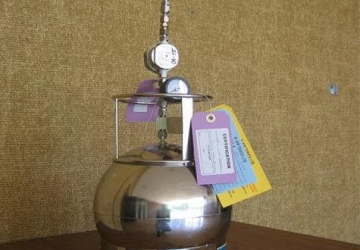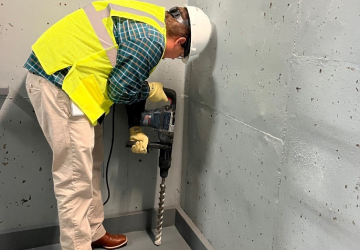Understanding Indoor Air Testing
What happens during indoor testing for vapor intrusion?
Usually, two visits over two days are needed for the sampling process and we try hard to schedule the work on days that are convenient for you. During the first appointment, air sampling canisters about the size of a basketball will be put in the lowest level living area or basement and the crawl space. Another sample will be collected outdoors so that all results can be compared. We will work with you to answer questions and identify common consumer products and other things that could interfere with the sampling and results. Some materials may need to be temporarily removed, if possible. This visit will take an hour or two.
During the second appointment about 24 hours later, Arcadis will retrieve the air sampling canisters. If you have a full crawl space, this will be the last visit needed. But if the building is on a concrete slab foundation or has a concrete basement floor, Arcadis will need to drill a small hole about 1.5 inches wide through the slab to collect a sample from underneath (called a sub-slab sample). This visit will take an hour or two.
If a sub-slab port is installed, a sample will be collected using a canister connected to the port with plastic tubing. This sample can either be taken 2 hours after sampling port installation or the next day. That means a third visit may be needed in some cases.
After sampling is complete, the port installed in the slab will be covered with a flush-mounted stainless-steel cap. The port should be installed in a location where the equipment can collect information that reflects the overall situation. The location can be adjusted based on furniture, carpeting, and other considerations. The port should remain in place in case additional sampling is needed in the future.



